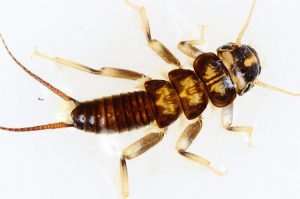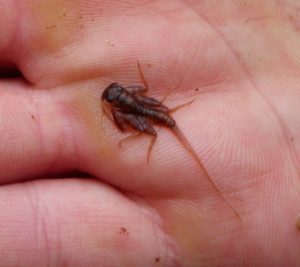
The arrival of November usually means cold weather is not too far off. But it doesn’t mean that you have to quit fishing. Certainly the fishing for wild, mountain trout can slow down significantly as water temperatures fall, but tailwater trout and really any stocked trout will continue to feed well, even in the coldest of temperatures. In recent years, winter guide trips to Delayed Harvest streams have become a favorite of many clients. This is probably because of the potential for really big trout!
In East Tennessee, the average winter day is not unbearably cold – at least not compared to many other places in the U.S. The coldest month of the year here is January where, in towns like Knoxville and Maryville, the average high is 46-degrees and the average low is 29-degrees. However, this is deceiving in a couple of ways.
When most folks view this forecast, they don’t take into consideration that you’re only going to experience that high temperature for a couple hours out of the day. Additionally, in the case of Delayed Harvest waters, we’re usually fishing mountainous areas where there’s a little more elevation and the sun spends a lot of the day low and behind the ridgeline. In other words, you can easily shave another 5-degrees off those highs and lows and when you throw in a little wind, you’ve got a pretty darn cold day on the water.
So, a typical full day trip in the winter will go from about 9 to 5. If the forecast is for a high of 46-degrees, that will be more like 40-degrees on the stream, and you’ll reach that high temperature probably around 3pm. That means for the majority of the day, you’ll be fishing in temperatures in the 30’s. Unless you grew up someplace like Alaska, North Dakota, or Maine, that’s cold! Don’t get me wrong, it can be a ton of fun and it never feels as cold when the fish are biting. But to better enjoy your day on the water, you better know how to dress. After all, there’s no such thing as bad weather, just bad clothing choices! Below are a few tips to prepare for a winter fly fishing trip.
-
Dress in Layers:
You hear this advice a lot from the weather person on your local news but I don’t think they usually understand the difference in dressing in layers and simply dressing warm. If I’m just going out in the cold for a while, I can just throw on a heavy coat and a hat and be set. However, when I’m going to spend the day outside in the cold, I’m likely to experience a variety of changing temperatures and conditions. Dressing in layers allows me the flexibility of adding or removing layers as conditions and activity levels change.
-
How to Layer:
There are three basic layers to consider. The first are the
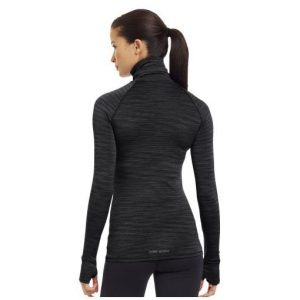
Long underwear with turtleneck top garments closest to your body, and their main objective should be to wick moisture from your body. If your body gets wet, from perspiration or anything else, you’re going to be cold, no matter what you’re wearing as an outer layer. Consider wearing a thin, synthetic “liner sock” on your feet and synthetic long underwear for your legs, arms and torso. Long underwear with a turtleneck top is a bonus as it gives an added layer on your neck.
The next layer is the insulating layer that is designed to keep you warm. Depending on how cold it is, this could actually consist of multiple layers. For the feet, a thick, heavy wool or fleece sock should be sufficient. The 3mm neoprene foot on the wader is also going to serve as insulation. For the legs, a fleece pant designed for cold wading is great and I also like traditional fleece lined pants. Up top, I typically wear a mid-weight fleece pullover followed by a heavier fleece pullover or jacket. As the day warms, I might remove the heavier fleece. Again, it’s a bonus if one or both of these upper layers covers the neck.
The third and final layer is the shell. Its purpose is to protect from wind and moisture. For your lower half, the waders serve as your shell. Up top, I just add a light to mid-weight rain jacket. The hood will act as a shell layer for your head.
-
The Extremities:
By extremities, I’m mostly talking about your head and your hands. These can be the most challenging and most important to protect. The challenge with the head is to keep it warm without interfering too much with necessary senses like sight and sound. For that reason, I HATE wearing a hood, though sometimes it’s necessary on rainy days.
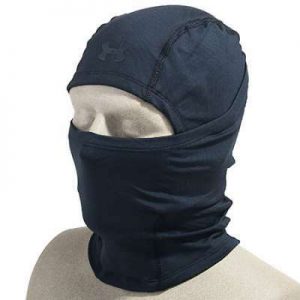
I layer my head with a product from Under Armour called an infrared hood. It’s the same thin-layered garment you see football quarterbacks wearing under their helmets in cold weather games. It covers the entire head, including the ears, but doesn’t interfere with hearing like earmuffs do. It also has a piece that can be pulled up to cover the face on particularly cold, windy days. Because it is relatively thin, I can wear a traditional ball cap over it on milder days or a warm stocking cap on colder days. This is one of the best pieces of cold weather fishing gear I’ve found!

The hands and fingers are the toughest part. Trying to keep warm while maintaining the necessary finger dexterity for fly fishing is one that I haven’t totally figured out. While there are fleece gloves and mitts with fold-back hand and finger pieces, they still leave your fingers exposed while fishing and the fold-back piece is just one more thing for your fly line to hang on. I prefer just standard wool or fleece fingerless gloves. They keep my hands warm and if the fingers start getting too cold, I take a break and put my hands in my pockets.
-
Adjusting Layers:
Most of this is common sense. If you’re cold, add a layer. But it’s important to pay attention to your activity level because you don’t want to be too insulated while active and start to perspire. Perspiration during cold weather can create a cold that’s hard to come back from once you become less active. It’s also a common cause of hypothermia when not addressed.
One of the biggest mistakes I see people make is overdressing for the car ride to the stream. Wearing too much in the car can cause you to perspire and you’re going to be cold all day. Wear the bare minimum of layers in the car and add the additional layers when you reach the stream. Pay particular attention to your feet!
-
Fabrics:
You may have noticed repeated references to fleece or synthetic fabrics. That’s a really important piece of the puzzle for staying warm, dry, and comfortable. Synthetic materials like fleece are not only more breathable, but offer insulating properties even when wet. Wool does the same thing though it is often heavier. This is important with all of your clothing in case you take a dunk in the stream. It is particularly important with your gloves, as your hands will constantly be exposed to water while fishing.


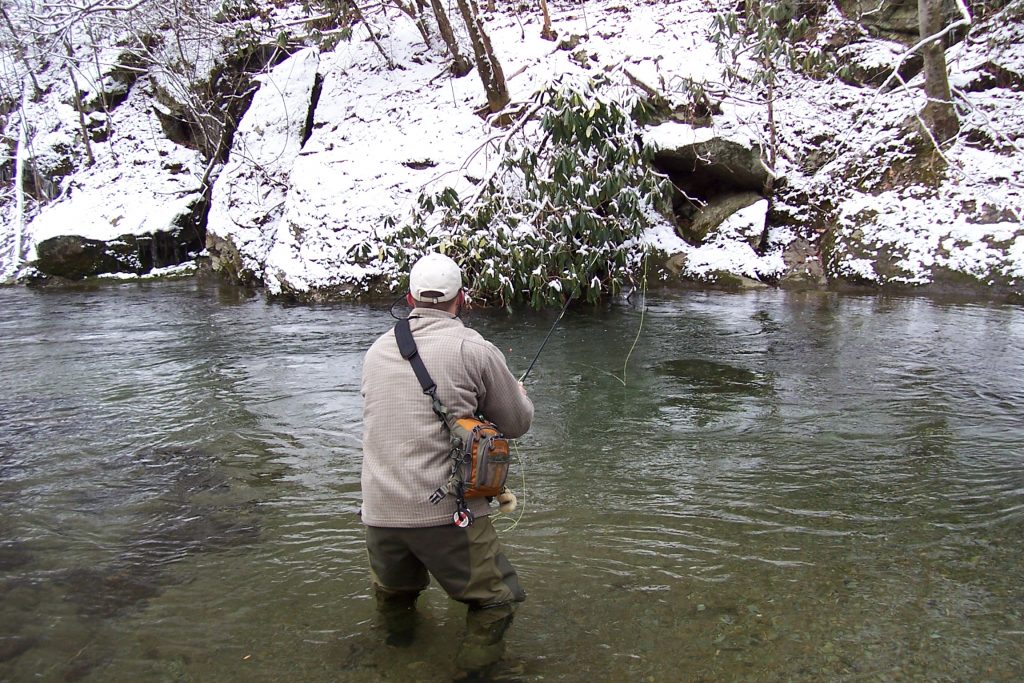


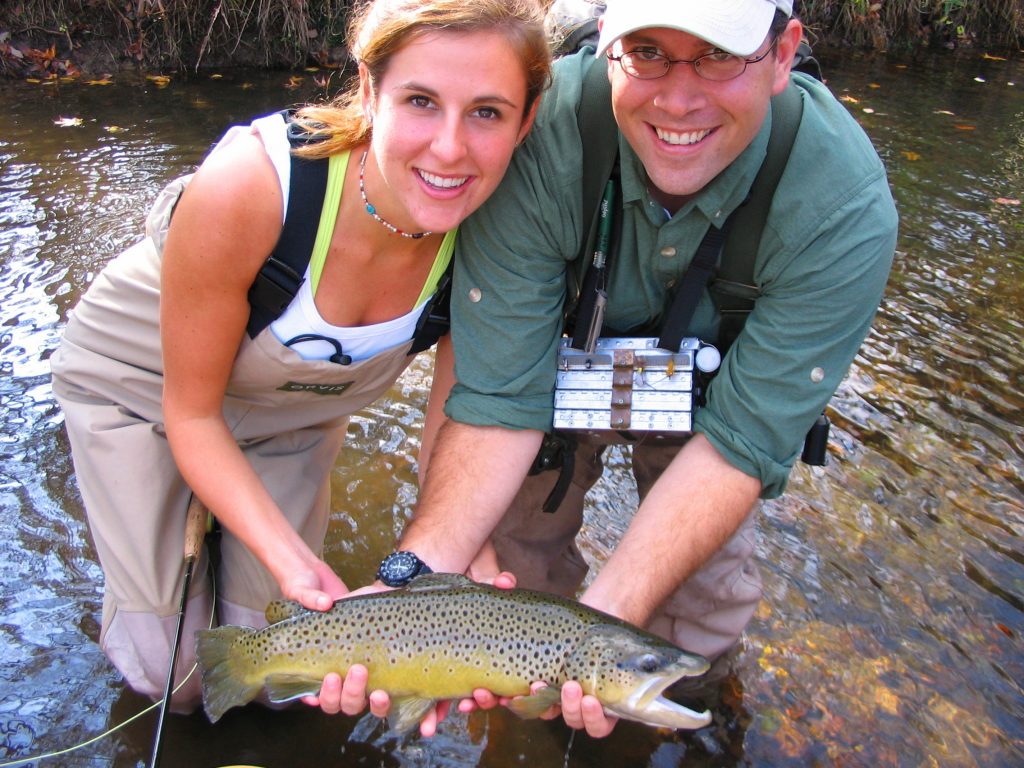 It’s the time of year when certain folks seem to be whispering more at the fly shop. They huddle in corners and peek over their shoulders before saying too much. They’re talking about brown trout. Big ones. Somebody mentioned seeing a decent one around Metcalf Bottoms – about 18-inches. A younger guy innocently asked, “Since when did we start referring to 18-inch browns as just ‘decent’?” The older guy replied with a grin, “October.”
It’s the time of year when certain folks seem to be whispering more at the fly shop. They huddle in corners and peek over their shoulders before saying too much. They’re talking about brown trout. Big ones. Somebody mentioned seeing a decent one around Metcalf Bottoms – about 18-inches. A younger guy innocently asked, “Since when did we start referring to 18-inch browns as just ‘decent’?” The older guy replied with a grin, “October.”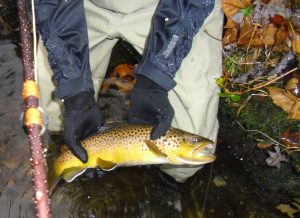



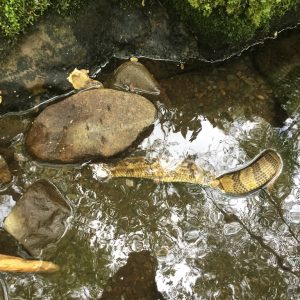

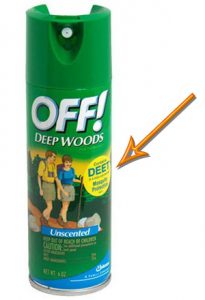 The best prevention for all of these, of course, is good old-fashion bug spray. Bug sprays with higher concentrations of Deet seem to be most effective, but be careful when using them. Deet has the ability to melt plastic. Getting a healthy dose of Deet heavy bug spray on your fingers can wreck a fly line. Just avoid spraying it on your palms and finger tips. If you’re one who likes to spray your hands and rub it on your face, just spray the back of your hands and rub it in that way.
The best prevention for all of these, of course, is good old-fashion bug spray. Bug sprays with higher concentrations of Deet seem to be most effective, but be careful when using them. Deet has the ability to melt plastic. Getting a healthy dose of Deet heavy bug spray on your fingers can wreck a fly line. Just avoid spraying it on your palms and finger tips. If you’re one who likes to spray your hands and rub it on your face, just spray the back of your hands and rub it in that way.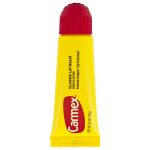 the woods, there’s a chance of picking up a tick. Deet based bug sprays will help with that, too. I still try to check myself periodically, particularly at the end of the day. If you do find one on you, there’s an easy way to remove it. Squeeze a dab of medicated lip balm (the gel type that comes in the squeeze tube) onto your finger and smear it on the tick. It will immediately release itself from your skin. Cool, huh?!? I always keep a tube of Carmex in my first aid kit for this reason.
the woods, there’s a chance of picking up a tick. Deet based bug sprays will help with that, too. I still try to check myself periodically, particularly at the end of the day. If you do find one on you, there’s an easy way to remove it. Squeeze a dab of medicated lip balm (the gel type that comes in the squeeze tube) onto your finger and smear it on the tick. It will immediately release itself from your skin. Cool, huh?!? I always keep a tube of Carmex in my first aid kit for this reason.


